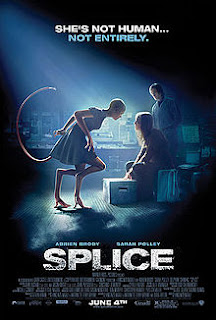Jurassic Park is an epic science fiction film. The film centers on the fictional Isla Nublar near Costa Rica, where a billionaire philanthropist and a small team of genetic scientists have created an amusement park of dinosaurs cloned from the DNA extracted from insects preserved in prehistoric amber.
To verify that the island is safe, three experts are invited: Dr. Ian Malcolm, Dr. Alan Grant and Dr. Ellie Sattler. The three of them engage in an intense philosophical debate about the ethics of having cloned extinct dinosaurs.
Problems start when one of the parks own workers attempt to steal the dinosaurs embryos, and have to shut down all the electricity in the process. It's now a race for survival with everyone located all over the island.
Real life...
60 Minutes' Lesley Stahl spoke about Paleontologist Jack Horner's controversial theory that chickens can become dinosaurs through "reverse evolution."
- All shots of full dinosaurs were made digitally, while shots of parts of them were done using animatronics
- The full-sized animatron of the tyrannosaurus rex weighed about 13,000 to 15,000 pounds
- In order to study the movement of the Gallimimus, the digital artists had to run along a stretch of road with some obstacles and with their hands next to their chest
- Briefly held the box office record until it was beaten by Titanic
- Both the film and the book generated so much interest in dinosaurs that the study of paleontology has had a record increase in students
- For the scene where the T-Rex catches a Galliminus and shakes it in his mouth, the sound was taken from a dog shaking a toy in its mouth
- When the T-Rex comes through the glass roof in the first attack to the Explorer, the glass was not meant to break. This generated genuine screams from the children
- The real species called Velociraptor was much smaller than the animals in the film and were believed to have feathers
- The sound made by the Dilophosaurus was a combination of the sounds of howler monkey, hawk, , rattlesnake and swan.
- The Velociraptor's sounds were a combination of the sounds of elephant seal pups, dolphin and walrus
- The T-Rex's roars are a combination of dog, tiger, penguin, alligator and elephant sounds
- The sounds made by the Brachiosaurs were a combination of whale and donkey sounds
- There are no opening credits after the title has been shown






